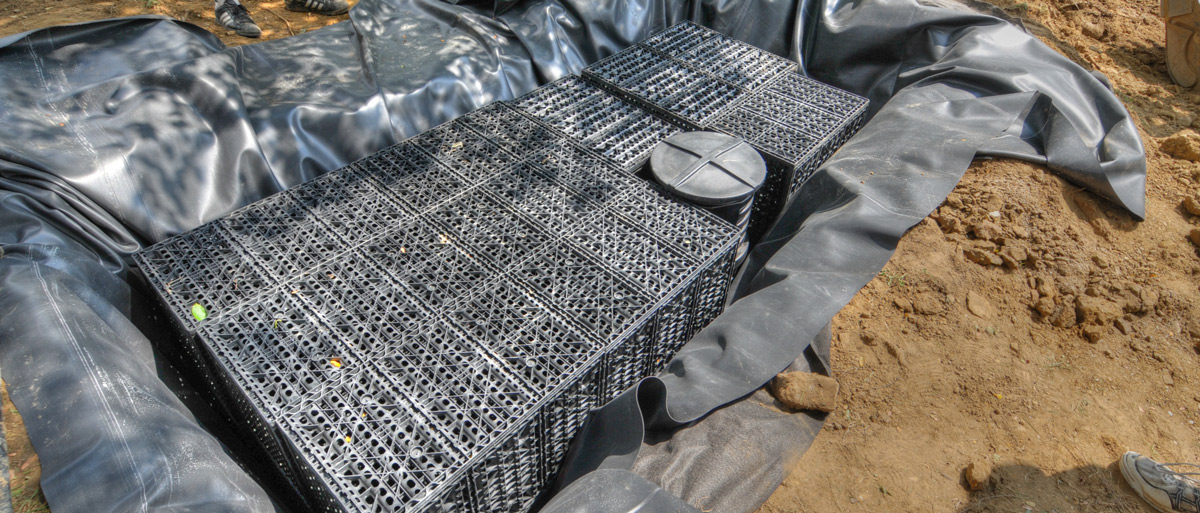Pond-Free 101 Chapter 6
The Pump Vault
If the Pump is the heart of the feature, constantly circulating the water, then the Pump Vault is its rib cage, housing and protecting the Pump from being crushed. All Pump Vaults must share a few simple common characteristics to be successful: strength, ease of access and flow capacity that matches the Pump. Strength is necessary because Pump Vaults have to resist the pressure of soil and gravel, rock and stone that would otherwise crush pump and plumbing. Ease of access allows for simple pump plumbing and upkeep that will pay off in longer pump life and lower maintenance costs. There should also be a wide strong lid that not only keeps gravel out, but keeps people from falling in!

Finally, of course, the slots or holes cut in the sides of the vault have to be able to pass the appropriate volume of water through to the pump as well. That said, there are a lot of different ways to make a Pump Vault. Some are 2-piece, some a single solid piece; many have auxiliary pieces that extend the height or depth of the Vault, increase its flow capacity or allow water to be drawn in from remote locations. The PV1800 is a typical example of a medium size Pump Vault. Rotomolded with ¼” thick Low Density PolyEthylene (LDPE) walls and ribbed, rounded contours, the material of the Pump Vault is flexible enough to withstand thousands of freeze-thaw cycles while the reinforced contours resist crushing or warping in the ground. Equipped with various ports for plumbing multiple pumps, locating an Autofill Valve or adding SDR pipe to create intake or outflow bogs, this example is as versatile as it is strong.

If the Pump is the heart of the feature, constantly circulating the water, then the Pump Vault is its rib cage, housing and protecting the Pump from being crushed. All Pump Vaults must share a few simple common characteristics to be successful: strength, ease of access and flow capacity that matches the Pump. Strength is necessary because Pump Vaults have to resist the pressure of soil and gravel, rock and stone that would otherwise crush pump and plumbing. Ease of access allows for simple pump plumbing and upkeep that will pay off in longer pump life and lower maintenance costs. There should also be a wide strong lid that not only keeps gravel out, but keeps people from falling in!

Finally, of course, the slots or holes cut in the sides of the vault have to be able to pass the appropriate volume of water through to the pump as well. That said, there are a lot of different ways to make a Pump Vault. Some are 2-piece, some a single solid piece; many have auxiliary pieces that extend the height or depth of the Vault, increase its flow capacity or allow water to be drawn in from remote locations. The PV1800 is a typical example of a medium size Pump Vault. Rotomolded with ¼” thick Low Density PolyEthylene (LDPE) walls and ribbed, rounded contours, the material of the Pump Vault is flexible enough to withstand thousands of freeze-thaw cycles while the reinforced contours resist crushing or warping in the ground. Equipped with various ports for plumbing multiple pumps, locating an Autofill Valve or adding SDR pipe to create intake or outflow bogs, this example is as versatile as it is strong.





